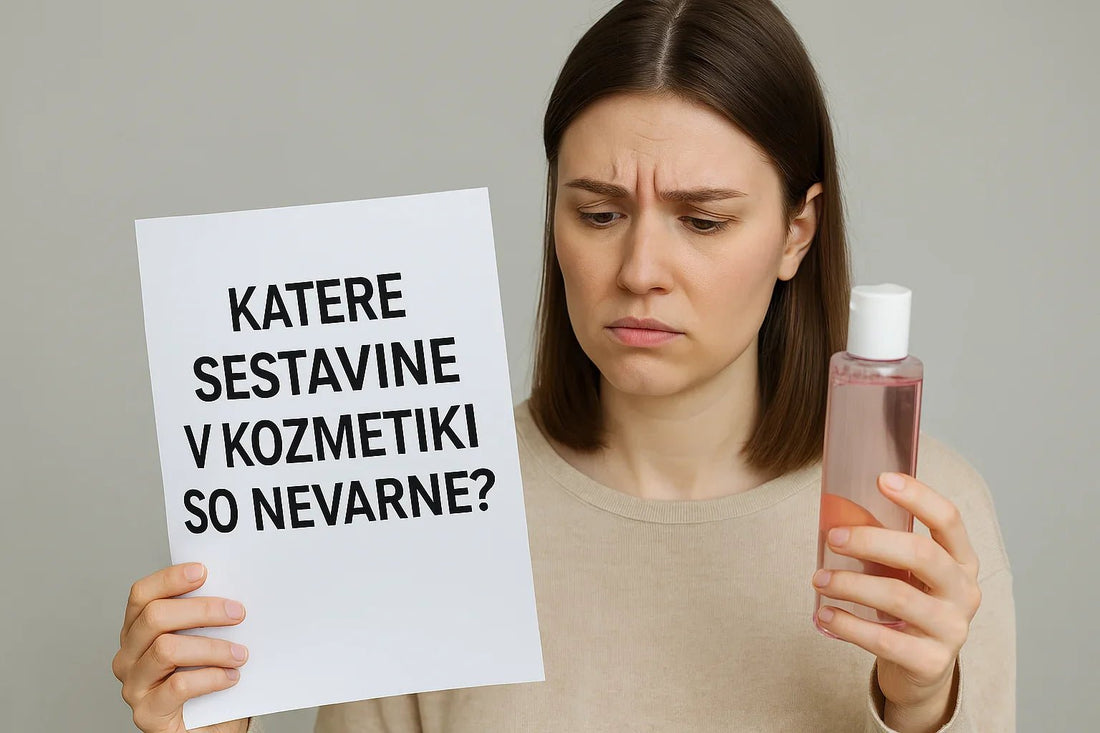
This is one of the most common questions we receive – and we completely understand the concern behind it. We only have one skin and we want to care for it in a safe, non-harmful and thoughtful way. But the answer to the question is not as simple as it may seem.
Can ingredients in cosmetics be dangerous?
The European Union has some of the strictest legislation in the world for cosmetics. Every ingredient must be regulated, safety assessed and approved for use. In practice, this means that there are almost no hazardous ingredients in EU products – if the product is correctly formulated and used, it does not pose a risk to the user’s health.
The danger often does not come from the ingredient itself, but from the method of use, dosage, or combination with other ingredients.
What can cause problems?
Below are examples of ingredients or situations that can pose a risk if not used or understood correctly:
- Phototoxicity: Essential oils (e.g. bergamot) may cause sunburn or pigment spots if used before sun exposure.
- AHA acids: Great for exfoliation, but without SPF protection they can irritate the skin and make it more sensitive.
- Essential and plant oils: Can trigger reactions in sensitive, reactive or damaged skin – although natural, they are very powerful and require knowledge.
Homemade cosmetics – a love that can hide risks
We are increasingly getting questions about homemade cosmetics. We know where this trend comes from – natural, handmade, without unnecessary additives... But unfortunately, it is with homemade cosmetics that the risk can be the greatest.
Without knowledge of concentrations, stability, and microbiological safety, such a product can quickly cause irritation or even infection.
Examples of risks in homemade cosmetics:
- Essential oils: An often incorrectly dosed supplement, especially risky for children, pregnant women, and atopic patients.
- Heat treatment: Heat can change the properties of oils, affecting the safety and effectiveness of the product.
- Calendula: A common ingredient in "gentle" care, but can trigger hypersensitivity reactions in atopic dermatitis due to sesquiterpene lactones.
Why do we write that our products do not contain dangerous ingredients, gluten, lactose...?
Because we live in a world where the confusion surrounding cosmetics is immense. The market is full of misinformation, fears of "chemicals," and warnings of "toxic ingredients." That's why we often write in the product description that it does not contain gluten, lactose, or dangerous ingredients - even though we realize that these labels are often unnecessary.
We do this to save you additional questions and clarifications, not to present ourselves as better than others.
So – what do we advise?
- Trust formulations that are proven and safe – even if they are not 100% natural. Effective care is often based on a combination of natural and safe laboratory-processed ingredients.
- Avoid homemade cosmetics if you have sensitive, reactive, or damaged skin.
- Know your ingredients, don't be afraid of them . When we understand their function, they become a useful tool in skin care, not something scary.
Your skin is not a testing ground – it's your largest organ. It deserves thoughtful, safe, and quality care.
At SkinFairytale.si, we strive to make this possible for you - with clear information, transparent ingredient lists, and answers to your questions.


